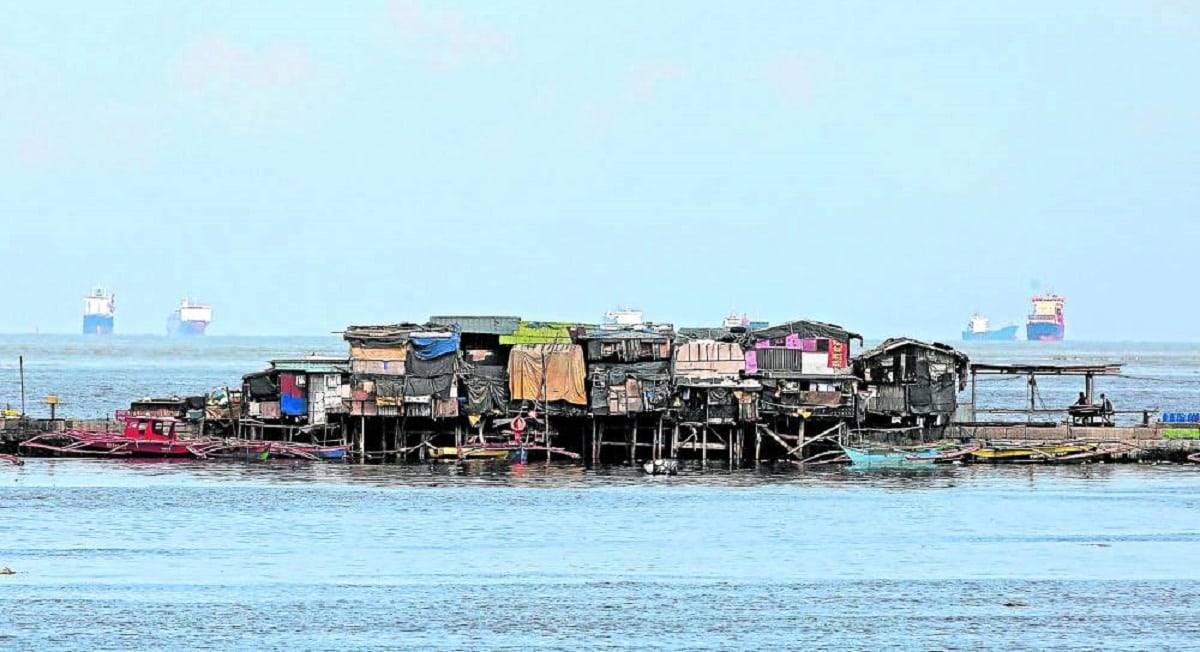
BLIGHTED HORIZON Some realities cannot be hidden—for they demand a response—like this cluster of shanties on Manila Bay, an area also known as Baseco in Manila’s Tondo district. —Richard A. Reyes
MANILA, Philippines — Poverty is one of the most urgent problems in the world, and eradicating poverty in all its forms remains one of the greatest challenges faced by humanity. It only makes sense that the first Sustainable Development Goal (SDG) of the United Nations (UN) is No Poverty.
Poverty has many dimensions, but its causes include unemployment, social exclusion, and the high vulnerability of certain populations to disasters, diseases, and other phenomena that prevent them from living productive lives.
SDG 1 or eradicating extreme poverty for all people everywhere by 2030 is a pivotal goal of the 2030 Agenda for Sustainable Development. Its targets include eradication of extreme poverty, reduction of multidimensional poverty, and building better social safety nets, especially for vulnerable populations. To achieve SDG 1, there is a need to mobilize resources via governments and the wider development community.
READ: Poverty: the latest reminder
Extreme poverty is currently defined as surviving on less than $2.15 per person per day, following the measures of the 2017 purchasing power parity. According to the UN, the global poverty headcount ratio at $2.15 was 8.5 percent or 659 million poor people.
The COVID-19 pandemic only added setbacks to the SDG fight against poverty, and the number of individuals living in extreme poverty increased for the first time in a generation by almost 90 million over previous predictions.
But even before the pandemic, the momentum of poverty reduction was slowing down. The UN has warned that if current patterns persist, an estimated 7 percent of the global population—around 575 million people—could still find themselves trapped in extreme poverty by 2030, with a significant concentration in sub-Saharan Africa.
Strong social protection systems mitigate the effects and prevent many more people from falling into poverty. To help address this crisis, 105 countries and territories announced almost 350 social protection measures between 2022 and 2023. And yet, according to the UN, 80 percent of these measures were short-term in nature. Countries have to implement nationally appropriate and sustainable social protection systems for all in the long term.
The UN also emphasizes that the private sector has a major role to play in determining whether the growth it creates is inclusive and contributes to poverty reduction. The private sector can promote economic opportunities for the poor and encourage transformational change in communities. Governments should also step up and help create an enabling environment that will generate productive employment and job opportunities for the poor and marginalized.
Sources: un.org/sustainabledevelopment/poverty/, sdgs.un.org, jointsdgfund.org, Reuters, adb.org